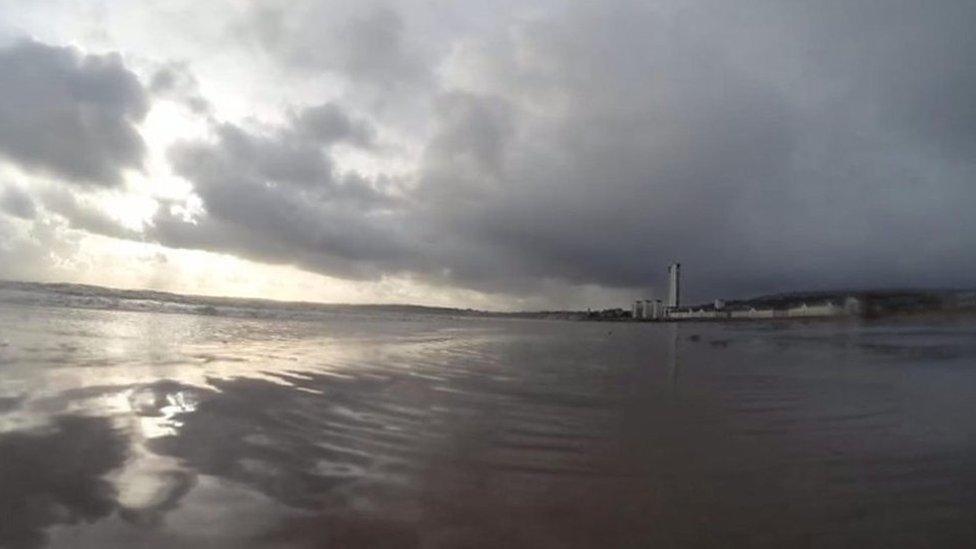Swansea lagoon should use 'Roman-style' concrete: expert
- Published

Roman-style concrete should be used to build the seawall for the planned Swansea lagoon, an expert has warned.
Professor Marie Jackson of the University of Utah warns the steel reinforcing a conventional concrete lagoon seawall will corrode after 60 years.
Roman concrete sea defences made without cement or steel could last more than 2,000 years.
The firm proposing the lagoon said it would use the best modern engineering.
But Prof Jackson told BBC Radio 4's Today programme that Roman-style concrete based on volcanic ash should be considered. It would also produce far fewer emissions of carbon dioxide from cement manufacture.
"Their technique was based on building very massive structures that are really quite environmentally sustainable and very long-lasting," she said.
"I think Roman concrete or a type of it would be a very good choice [for Swansea]. That project is going to require 120 years of service life to amortise [pay back] the investment.
"We know that Portland cement concretes contain steel reinforcements. Those will surely corrode in at least half of that service lifetime."
Her research colleague, Professor Paulo Monteiro, of the US Department of Energy's Lawrence Berkeley National Laboratory in California, has highlighted the environmental impact of concrete.
"It's not that modern concrete isn't good ... the problem is that manufacturing Portland cement accounts for 7% of the carbon dioxide that industry puts into the air," he said.
Making Portland cement releases carbon from burning fuel to heat limestone and clays to temperatures of 1,450C - and also from the heated limestone itself.
Prof Monteiro's team found that the Romans, by contrast, used less lime baked at just 900C or lower, requiring far less fuel than Portland cement.
That is an important consideration for a project designed to tackle climate change.
However, building the seawall without steel is unlikely to be welcomed in south Wales, where hopes are high that the lagoon concrete will provide a market for locally produced steel.

The Romans, the academics say, used a different recipe for marine concrete compared with land-based concrete.
For underwater structures, lime and volcanic ash were mixed and stuffed into wooden forms. The seawater triggered a hot chemical reaction. The lime was hydrated - incorporating water molecules into its structure - and reacted with the ash to cement the mixture together.
Descriptions of volcanic ash have survived from ancient times. Pliny the Elder recorded that the best maritime concrete was made with ash from volcanic regions of the Gulf of Naples.
The two academics say ash with similar mineral characteristics, called pozzolan, is found in many parts of the world - although the CO2 impact of transporting it would become a factor for Swansea.
A spokesman for the company behind the lagoon plan, Tidal Lagoon Power, told BBC News: "There is much to learn from the past - the UK first tapped the power of the tides in 619AD - but we'll rely on the very best of modern engineering when it comes to the world's first tidal lagoon at Swansea Bay."
The UK government has yet to decide whether to subsidise the project.
Simon Hamlyn of the British Hydropower Association said that steel used to reinforce the concrete parts of the seawall would be prevented from corrosion for at least 60 years by cathodic protection - an electrical method used to protect steel structures buried in soil or in a marine environment.
Follow Roger on Twitter: @RHarrabin, external
- Published12 January 2017

- Published12 January 2017
